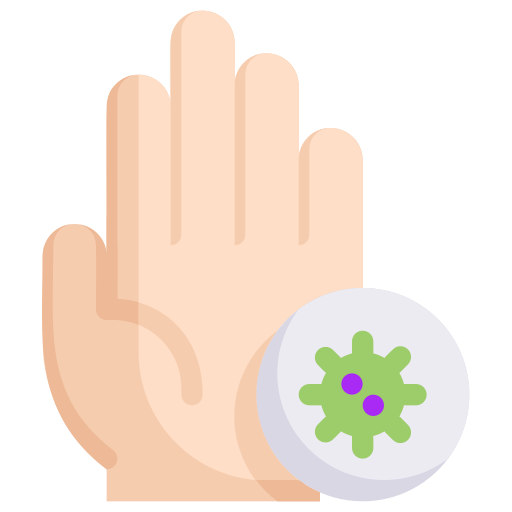The Hidden Dangers of Overprescribing Antibiotics to Children
In the realm of pediatric care, antibiotics have long been heralded as a linchpin in the fight against bacterial infections. However, their widespread and sometimes indiscriminate use harbors risks that are less visible but equally pernicious. The practice of overprescribing antibiotics to children not only often proves unnecessary but also contributes to a phenomenon known as antibiotic resistance. This resistance manifests when bacteria evolve in response to the exposure to antibiotics, eventually leading to the emergence of strains that no longer respond to treatments once deemed effective.
The mechanics of resistance development are rooted in the fundamental principles of evolution. Antibiotics designed to kill bacteria do so selectively, eliminating susceptible bacteria and leaving behind those with mutations that confer resistance. These resistant strains then proliferate, bearing offspring that inherit this invulnerability. In pediatric cases, the repetitive exposure to antibiotics accelerates this process, fostering an environment where resistant bacteria can thrive. This evolution is a direct consequence of overprescription, with children receiving antibiotics for viral infections against which these medications are ineffective, thereby unnecessarily accelerating resistance development.
The global implications of antibiotic resistance in children cannot be overstated. It compromises the efficacy of treatments for common childhood bacterial infections, leading to prolonged illness, increased medical costs, and a higher burden on healthcare systems. Furthermore, it poses a significant challenge to surgical procedures and the treatment of chronic conditions, where antibiotics play a critical role in preventing infections.
| Issue | Implication |
|---|---|
| Overprescription to Children | Rapid Development of Resistance |
| Introduction of Tetracyclines (1948) | Expanded the range of treatable infections, further reducing mortality rates. |
| Global Spread of Resistance | Compromised Treatment Efficacy |
To mitigate these risks, a multifaceted approach is essential. It spans from improving diagnostic tools to ensure antibiotics are only prescribed when absolutely necessary, to educating both healthcare providers and parents about the judicious use of antibiotics. The trajectory of antibiotic resistance underscores an urgent need for action, not just from the medical community but from all stakeholders in child health. By fostering an environment that curtails unnecessary antibiotic use, we safeguard the efficacy of these critical medications for future generations.
Understanding How Antibiotic Resistance Develops in Pediatric Cases
Antibiotic resistance in pediatric populations is a complex, multifaceted issue that emerges from the interplay between pharmacology, microbiology, and human behavior. At its core, the phenomenon is driven by the misuse and overuse of antibiotics, which provides selective pressure that favors the survival and propagation of resistant strains of bacteria. This cycle begins when antibiotics are prescribed for viral infections against which they are ineffective, or when the prescribed course of antibiotics is not completed, allowing bacteria to survive and potentially mutate to resist future antibiotic treatments.

A critical aspect of understanding this issue lies in grasping the nature of what is bacterial infections in children, which are often the target of antibiotic therapy. Bacterial infections can range from urinary tract infections to more serious conditions such as pneumonia or bloodstream infections. When antibiotics are used judiciously, they are powerful tools against these diseases. However, each inappropriate prescription accelerates the potential development of antibiotic-resistant bacteria, a stark reality that the pediatric population is increasingly facing.
Moreover, children are unique in their physiological responses and their pharmacokinetic profiles differ significantly from adults, affecting the distribution, metabolism, and excretion of antibiotics. This necessitates tailored dosing strategies that can vary greatly depending on age and weight, adding complexity to the challenge of judicious antibiotic use. The global spread of antibiotic-resistant pathogens does not recognize national borders, making antibiotic resistance in pediatric cases not just a local but an international public health threat.
To address this growing concern, a nuanced understanding of the mechanisms by which antibiotic resistance evolves is essential. This includes the recognition of genetic mutations within bacteria that confer resistance, and the role of horizontal gene transfer in spreading resistance genes among different bacteria. Such knowledge underpins the development of interventions aimed at mitigating the spread of resistance, guiding healthcare practitioners toward optimal antibiotic stewarding practices and informing public health strategies that protect the youngest and most vulnerable members of our communities.
The Global Impact of Antibiotic Resistance on Child Health
The perilous spread of antibiotic resistance has escalated into a critical global health crisis, menacing not only the adult population but increasingly casting a dire shadow over child health. As instances of antibiotic resistance surge, the efficacy of standard treatments against common pediatric infections is markedly diminished, leading to prolonged illnesses, increased hospitalization rates, and, in severe cases, escalated risk of fatality. This daunting scenario underscores an urgent need for a nuanced understanding of what is bacterial infections in children and the complexities involved in their treatment.

In the realm of child health, the repercussions of antibiotic resistance are both broad-reaching and profund. Children, particularly those in low- and middle-income countries, are often the most vulnerable to infectious diseases. Their exposure to resistant pathogens not only complicates the management of seemingly straightforward bacterial infections but also exacerbates the challenge of safeguarding children's health against more severe diseases. The ripple effects of such resistance strain already burdened healthcare systems, amplify healthcare costs, and hinder the progress made in child mortality reduction over the past decades.
Furthermore, antibiotic resistance acts as a catalyst for the re-emergence of diseases once thought to be under control. As resistance genes spread across communities and borders, the global interconnectedness ensures no region remains insulated from this threat. The specter of a post-antibiotic era looms larger, threatening to reverse decades of medical advancements and compelling a reevaluation of approaches to pediatric care on an international scale.
Addressing this crisis demands a coordinated global response, integrating measures to steward antibiotic use, advance diagnostic tools, and foster the development of innovative treatments. It is imperative that the scientific community, policymakers, and international health organizations synergize their efforts to curtail the ascent of antibiotic resistance. Through such concerted action, we can hope to sustain the progress achieved in child health and shield future generations from the profound consequences of unchecked antibiotic resistance.
Effective Strategies to Combat Antibiotic Resistance in Pediatrics
Combating antibiotic resistance within the pediatric population necessitates a multifaceted approach that hinges on judicious antibiotic usage, heightened awareness, and concerted efforts across the medical community. The cornerstone of this strategy is the principle of antibiotic stewardship – ensuring that antibiotics are prescribed only when necessary and that the correct type and dosage are used. Addressing what is bacterial infections in children with accuracy is paramount; it involves distinguishing between viral and bacterial infections, thereby reducing unnecessary antibiotic prescriptions. This discernment is crucial as misuse not only fails to treat viral infections but also contributes significantly to the development of antibiotic resistance.

In addition to medical practitioners' responsibilities, public health initiatives play a critical role in educating both healthcare professionals and the community. Campaigns aimed at raising awareness about the implications of antibiotic resistance and the importance of adhering to prescribed treatments can substantially alter the course of this burgeoning threat. These efforts are complemented by the implementation of vaccination programs which effectively reduce the incidence of bacterial infections among children, thus indirectly curtailing the need for antibiotics.
Furthermore, the academia and research sector contribute by developing diagnostic tools that provide rapid and precise identification of pathogens. Such advancements enable clinicians to prescribe the most appropriate antibiotic regimen, if necessary, thereby minimizing the indiscriminate use of broad-spectrum antibiotics. Innovations in treatment modalities that bypass traditional antibiotics altogether, such as phage therapy, also hold promise for a future where antibiotic resistance is less of a menacing specter.
Finally, the active engagement of parents and caregivers is indispensable. By advocating for and practicing judicious use of antibiotics, adhering to vaccination schedules, and fostering a general understanding of the mechanisms behind antibiotic resistance, they form the frontline defense against this growing threat. Collectively, these strategies encapsulate a comprehensive approach to mitigating antibiotic resistance in pediatrics, emphasizing a synergy between clinical practice, education, innovation, and community involvement.
The Role of Parents and Caregivers in Prevention
In the labyrinth of healthcare responsibilities, parents and caregivers hold the map to navigate the prevention of antibiotic resistance, a burgeoning crisis impacting pediatric health. The stewardship of antibiotics is not just a matter reserved for healthcare professionals; it extends into the homes and daily routines of families worldwide. Educating oneself on the nuances of bacterial infections in children is paramount. It is essential to discern between viral and bacterial ailments, understanding that antibiotics are a sword against the latter and futile against the former. This knowledge prevents the misuse of antibiotics, a common misstep in the journey towards antibiotic resistance.
The dialogue between healthcare providers and caregivers is another cornerstone in preventing the misuse of antibiotics. Inquiring about the necessity and appropriateness of antibiotics fosters a culture of accountability and informed decision-making. Such conversations illuminate the potential risks and benefits, empowering caregivers to make judicious choices concerning their child's health. Moreover, adherence to prescribed antibiotic regimens is critical. Discontinuation of antibiotics upon the slightest improvement or sharing prescriptions undermines the battle against resistant bacteria, inadvertently paving the path for these formidable adversaries to thrive.
| Action | Impact |
|---|---|
| Education on Bacterial vs Viral Infections | Reduces unnecessary antibiotic prescriptions |
| Dialogue with Healthcare Providers | Ensures antibiotics are appropriately prescribed |
| Adherence to Prescribed Regimens | Limits the development of antibiotic-resistant bacteria |
Beyond individual action lies the collective endeavor of fostering environments conducive to health, thus mitigating the incidence of infections necessitating antibiotics. This includes upholding high standards of hygiene, advocating for vaccination, and supporting public health initiatives aimed at reducing the spread of infectious diseases. As custodians of the next generation's health, parents and caregivers wield significant influence in the global effort to curb antibiotic resistance, safeguarding not only their children but the wider community from the specter of untreatable infections. This proactive stance against antibiotic resistance is a testament to the power of informed, engaged parenting in confronting one of the most pressing health challenges of our time.
Pioneering Research and Future Directions in Pediatric Care
In the realm of pediatric care, ongoing research is relentlessly pushing the boundaries of our current understanding, particularly concerning antibiotic resistance. One innovative area of study focuses on the microbiome’s role in mediating resistance and resilience against infectious diseases. Scientists are exploring how alterations in the gut flora, influenced by antibiotics, might predisact children to more severe health issues later in life. This research is crucial, as it could lead to the development of microbiome-modulating therapies aimed at preventing or mitigating antibiotic resistance. 
Furthermore, the advent of artificial intelligence (AI) and machine learning is set to revolutionize pediatric research by enabling the analysis of vast datasets beyond human capability. This technology is instrumental in identifying patterns and predicting outbreaks of antibiotic-resistant infections, thus allowing for more proactive and effective interventions. AI-driven platforms are also being developed to aid in the rapid diagnosis of resistant infections, significantly reducing the time it takes to administer the correct treatment. This approach not only improves patient outcomes but also minimizes the unnecessary use of broad-spectrum antibiotics, thereby curbing the escalation of resistance.
Looking toward the future, the synergy between nanotechnology and antibiotic delivery presents an exciting frontier. Researchers are exploring the use of nanocarriers to deliver antibiotics directly to the infection site, enhancing drug efficacy while limiting systemic exposure. This targeted approach could dramatically reduce the evolutionary pressure on bacteria to develop resistance, offering a promising new tactic in the battle against antibiotic-resistant pathogens. As we venture into these uncharted territories, the collective efforts of the scientific community are set to provide a beacon of hope, illuminating the path toward safer, more effective pediatric care in the face of escalating antibiotic resistance.
Content Manager: Dr. Paul Edward Sax











